#0014 🌟Cultivating Empathy: My Experience with 2 Life-Changing Tools for Leaders & Parents🌟

Hey - Jane here. Welcome to issue #0014 of CVB weekly, where I will help you connect the customer-centricity dots. In this newsletter, I will be going a little deeper into the topics I shared with the audience at the She Conquers online summit with the @sheevolves.community
Empathy and the transformative impact it has had on me as a mum and leader.
The entire talk was a nail-bitingly short 10 minutes. 😬 Time enough to squeeze in all the value and that took a lot of practice & editing. What an awesome opportunity and despite a few tears, I loved the process. The TL;DR of conferences. You can watch it below.

Empathy, an essential human skill, plays a vital role in our personal and professional lives. Much like hard skills, which are often acquired through formal education and training, human skills, also known as soft skills, may necessitate guidance from a coach or mentor. Throughout my journey, I've been fortunate enough to learn from numerous coaches who have helped me hone this invaluable ability.
One of my coaches is Brene Brown. {truth be told, she is my #digitalcoach 💡😆}
Brene defines Empathy as follows.
Empathy is connecting with people so we know we're not alone when struggling. Empathy is a way to connect to the emotion another person is experiencing; it doesn't require that we have experienced the same situation they are going through." Brene Brown (read more - Google 'Brene Brown definition of empathy')
This is where my journey with practising Empathy began - a great coach gave me some honest feedback that I was practising kindness rather than Empathy. And so began a long journey {and many coaches} to build a practice around Empathy. It is a superpower that has won me many clients and shifted my path as a parent.
These are the lessons and tools I have built up through my journey. Let's start with the long list before we dive deeper into the two tools.
- Active Listening: This technique involves paying close attention to what others are saying and asking clarifying questions to understand their perspective fully. This required coaching to gain a deeper understanding of bias and its impact on my ability to listen & empathise.
- Storytelling: Sharing stories about personal experiences can help people connect emotionally and understand each other's perspectives. This can include the sharing of our own story or the process of engaging with another person's stories. For more on the power of digital storytelling, read here.
- Mindfulness: Practicing mindfulness can help people become more aware of their own emotions and better recognise and respond to the emotions of others. Everyone's practice is different, and what works for one may not work for another. My practice uses Wim Hof breathing.
- Cultural Immersion: Exposing oneself to different cultures and perspectives can help broaden one's worldview and increase Empathy. My journey took me to South Korea, but we can all practice cultural immersion by seeking out cultural experiences where we live.
- Role-Playing: Role-playing exercises can help people practice perspective-taking and develop Empathy for others by putting themselves in different situations.
- Reflective Writing: Journaling or reflective writing can help people process their emotions and develop a deeper understanding of themselves and others. There is an excellent 12-month course you can do on journalling here, as it is a tool I am working on myself.
- TOOL 1: Empathy Mapping: This tool involves mapping a person's thoughts, feelings, and behaviours to understand their perspective better. I will go into detail on this below.
- Emotional Intelligence Training: Emotional intelligence training can help people develop self-awareness, self-regulation, Empathy, and social skills. This required a therapist for 12 months, and I highly recommend it if you feel the calling the dig a little deeper.
- TOOL 2: The three chairs: a practical tool that requires the physical set-up of three chairs and the steps I list in more detail below.
In this edition, I will cover the two tools I use and their impact on me as a mum and leader.


TOOL # 1: The three chairs
The three chairs method is a powerful technique for practicing empathy & useful if you have a challenging situation with a boss, client, family member or friend. Here are the steps and questions you can use to implement this method:
Step 1: Identify the issue or situation
- Ask yourself:
- What is the issue or situation that you want to explore?
- What are the different perspectives or points of view on this issue?
Step 2: Set up three chairs
- Place three chairs in a room or a space where you can sit comfortably.
- Label each chair with a different perspective or point of view. For the example I shared in the talk, the three chairs were for me, my son and the observer.
Step 3: First Chair - Your Perspective
- Sit in the first chair representing your own perspective.
- Ask yourself:
- How do I feel about this issue?
- How am I breathing?
- If there is any discomfort, where is it in my body?
- What are my thoughts and beliefs about this issue?
- What biases or assumptions might I hold about this issue?
- How do these factors influence my perception of this issue?
Step 4: Second Chair - Another Perspective
- Move to the second chair representing another perspective.
- Imagine yourself in the shoes of the person or group that holds this perspective.
- Ask yourself:
- How might they feel about this issue?
- How are they breathing?
- If there is any discomfort, where is it in their body?
- What are their thoughts and beliefs about this issue?
- What biases or assumptions might they hold about this issue?
- How do these factors influence their perception of this issue?
Step 5: Third Chair - The Neutral Perspective
- Move to the third chair representing a neutral observer or mediator.
- Take a step back from both your perspective and the other person's perspective.
- Ask yourself:
- What are the commonalities between the two perspectives?
- What are the areas of conflict between the two perspectives?
- What potential solutions exist to resolve this conflict?
- How could I facilitate communication and understanding between the two parties?
- What do I want to do with this new understanding?
Step 6: Reflect and Learn
- After sitting in each of the three chairs, reflect on your experience.
- Ask yourself:
- What did I learn about my own perspective?
- What did I learn about the other person's perspective?
- What did I learn about the neutral perspective?
- How can I apply what I've learned to practice empathy in other situations?
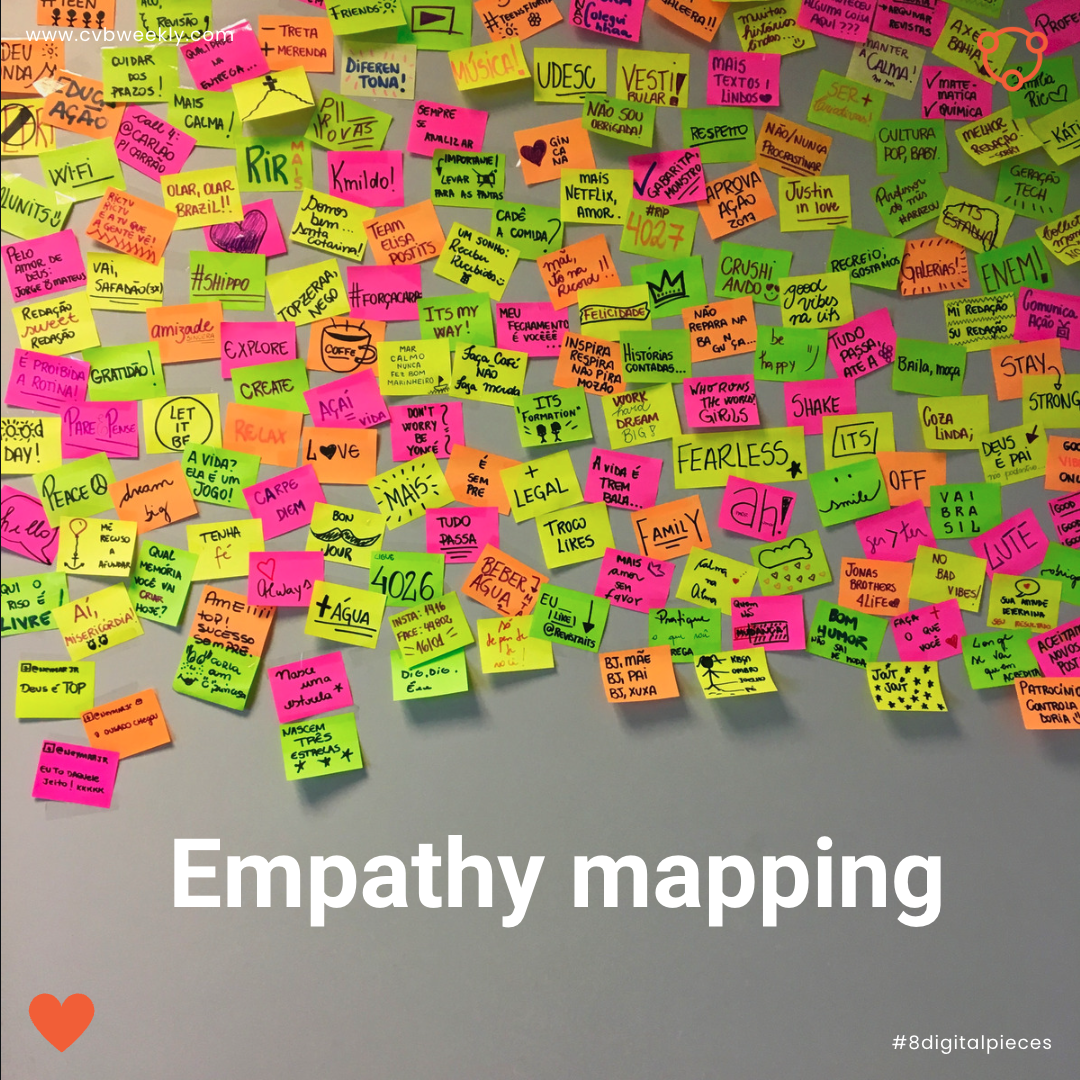
Empathy mapping is a powerful tool that can help individuals and organisations better understand their customers or stakeholders. By creating a visual representation of their thoughts, feelings, and behaviours, empathy mapping can provide valuable insights into what drives their decisions and behaviours. {this is key to the process with every client I work with to determine growth strategies}
Set up: Find a blank wall or space. Buy three colour Post-it note packs and a Sharpie as your tools.
Step 1: Define the 'customer': The first step in empathy mapping is to define the individual or group you want to understand better. This could be a customer, client, stakeholder, or any other person or group interacting with your organisation. Gather information about their demographics.
Step 2: Gather insights. The next step is to gather insights about the 'customer' by conducting research, interviews, or surveys. This can involve asking open-ended questions, observing their behaviours, or analysing their social media activity. The goal is to understand their perspective deeply and what drives their decisions.
Step 3: Create the empathy map - customer profile. Once you have gathered insights, it's time to create the empathy map. This involves creating a visual representation of the persona's thoughts, feelings, and behaviours. Some different templates and formats can be used, but a common one includes three quadrants and was developed by Strategyzer. At this step, use a different post-it note for each 'type'.
- Gains (YELLOW): the 'customer' is seeking a gain to which you will position yourself as a gain creator. The way a customer measures a job well done and is positive.
- Pains (PINK): the person is experiencing pain to which you will position yourself as a pain reliever. The things that annoy a customer when they are trying to get a job done.
- Jobs GREEN): the person is seeking to get a job done, to tick something off their to-do list. They can be functional, social or emotional.
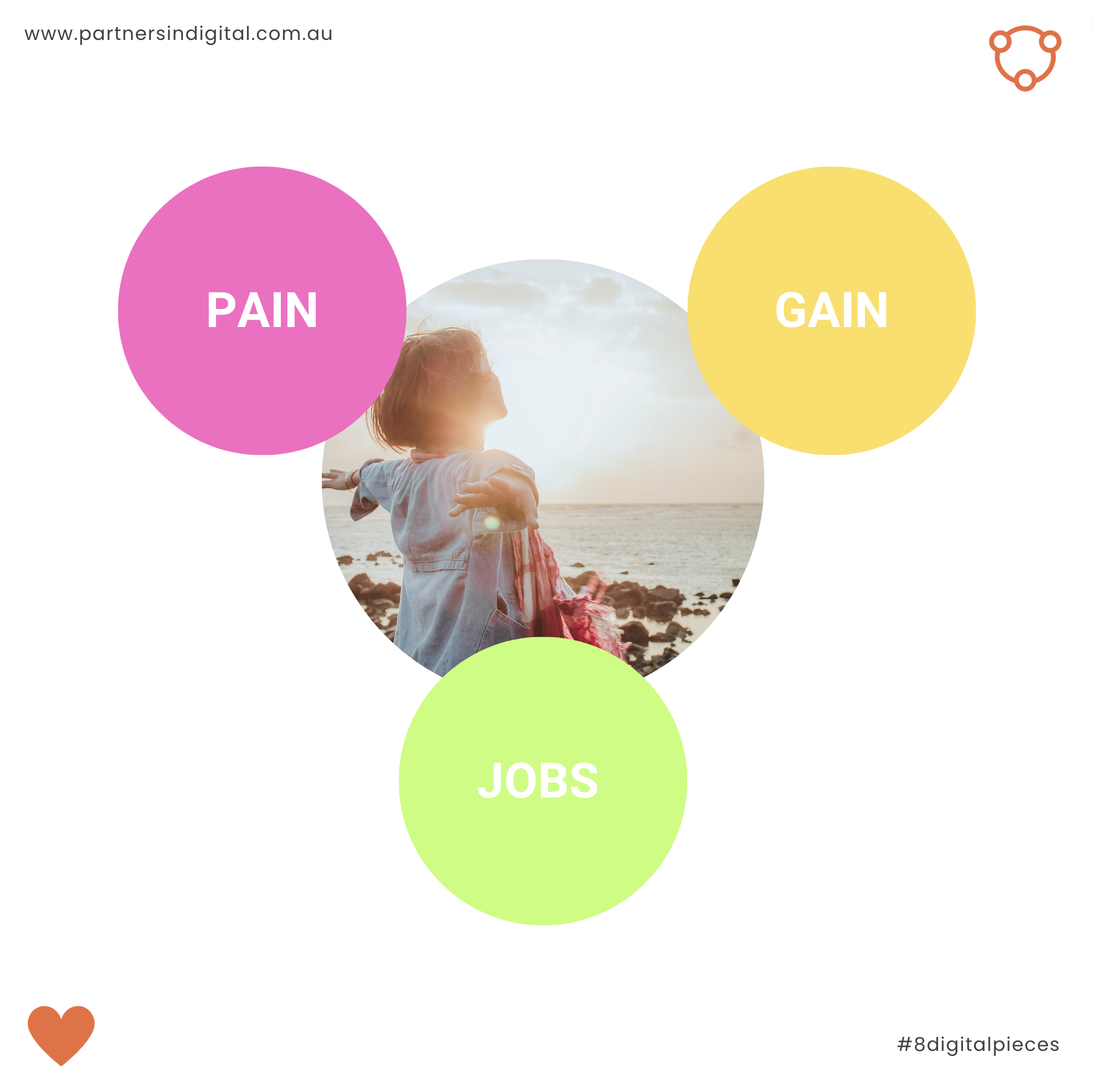
Step 4: Create the empathy map - value map. The next step is to build the value map, where you start to look at how you package your value in terms of products and services. It's the step where you look at how those products and services measure up to the wants and needs of the 'customer'.
- Jobs: What are your products and services?
- Gains: How your products and services are gain creators?
- Pains: How your products and services are pain relievers?
Step 5: Analyse the empathy map (customer profile + value map). The final step is to analyse the empathy map to gain insights and identify opportunities for improvement. Look for patterns, trends, and gaps in the 'customers' thoughts, feelings, and behaviours. Use this information to identify pain points, areas of opportunity, and potential solutions. Opportunities can lie within a new product or service gap or a messaging and story gap. This is your competitive advantage as most companies will only focus on the product that serves a functional need.
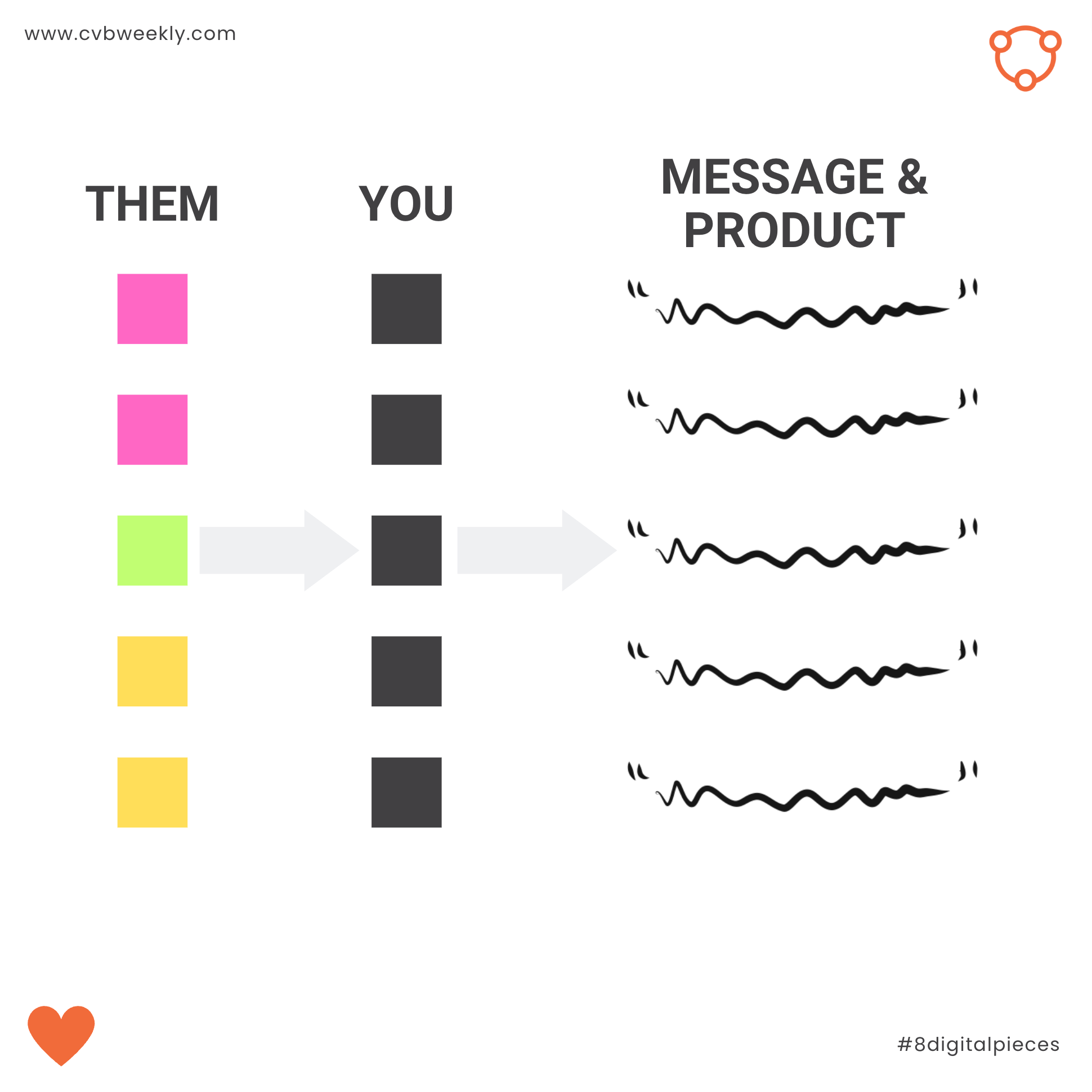

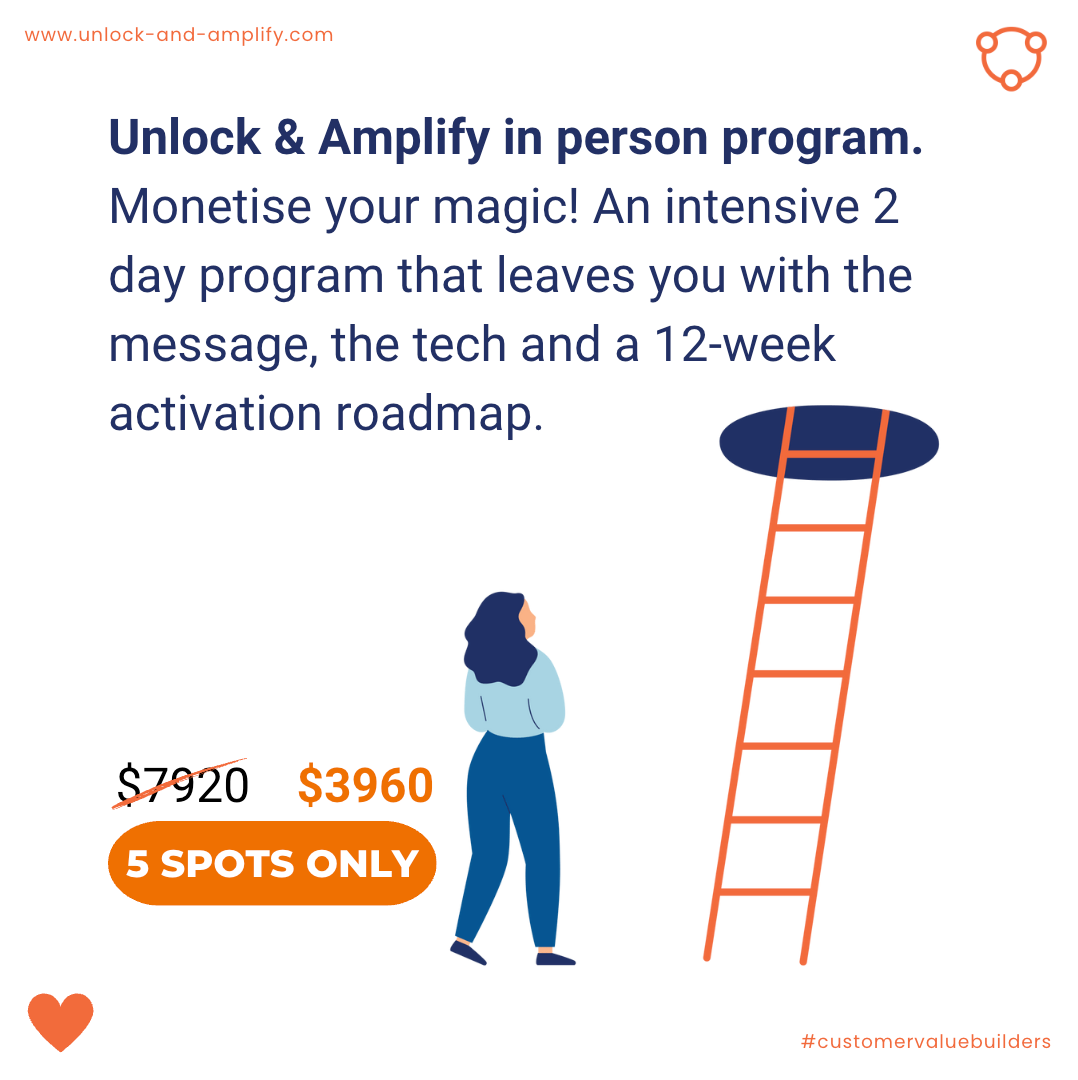
Unlock and Amplify is the ultimate program for leaders who feel blocked by technology knowledge gaps, fear their story is unworthy, and lack clarity on their target audience. With online learning, coaching, and peer support, our program empowers leaders to unlock their potential, clarify their messaging, and reach their target audience more effectively. Join our community today and amplify your impact in the world. For the She Evolves community, I am offering a 50% discount for the first 5 people who sign up - price as listed. Book now.
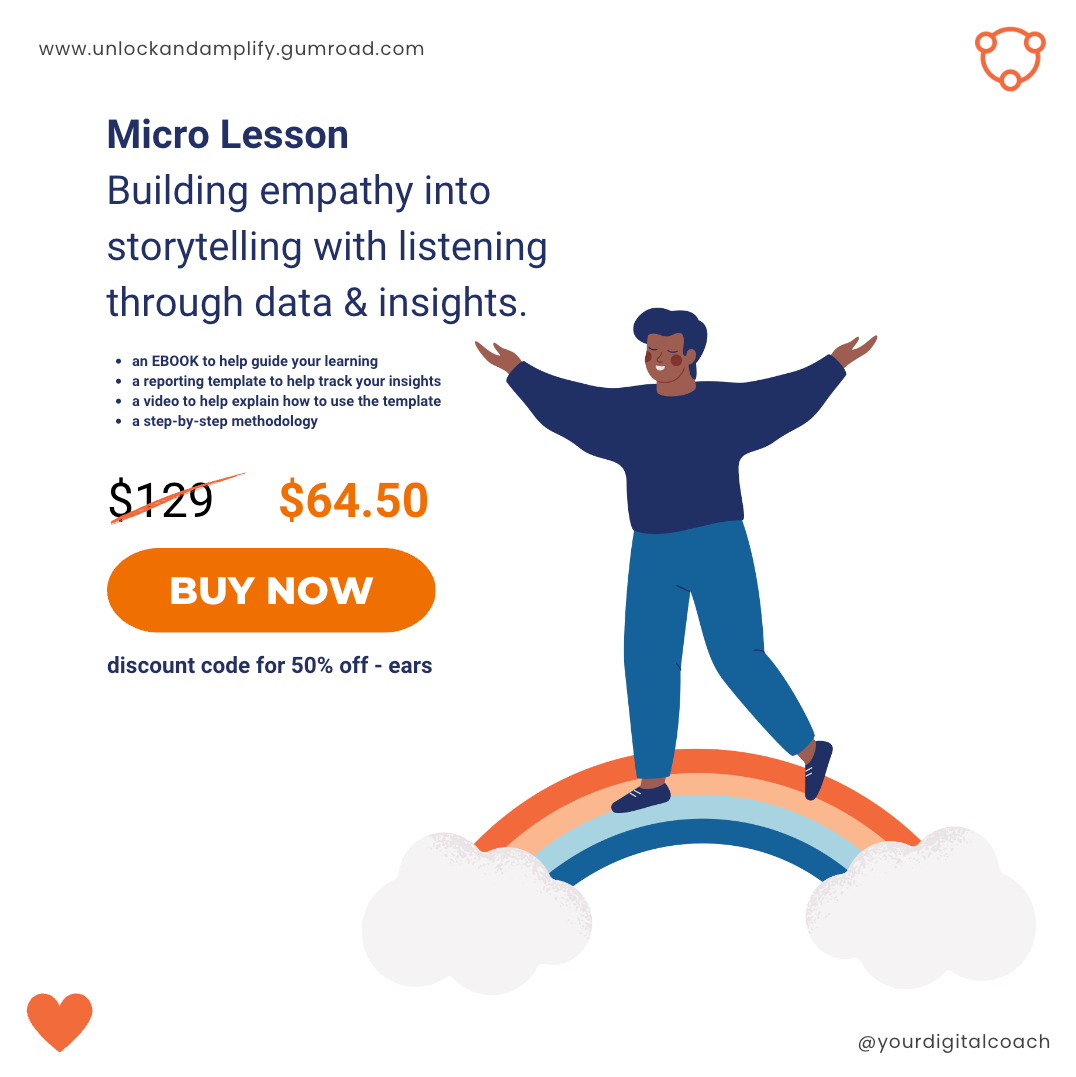
Introducing our latest micro lesson for founders and marketers: "Building Empathy into Your Storytelling with Data and Insights"!
In today's digital age, storytelling is more important than ever. It's not just about selling a product or service but about creating a connection with your audience. And what better way to do that than by incorporating empathy into your storytelling?
Our micro lesson will teach you how to use data and insights to understand your audience better to craft better stories that resonate with them on a deeper level. You'll learn how to identify key pain points, motivations, and emotions that drive your audience and how to use that knowledge to create more compelling & connected content.
Whether you're a seasoned marketer or a new founder just starting, this micro lesson is perfect for anyone looking to improve their storytelling skills and build deeper connections with their audience. Sign up now and take the first step towards becoming an empathy-led storyteller!
I am offering a 50% discount for the She Evolves community for the first 20 people who sign up - price as listed. Buy now.

- Subscribe to the weekly CVB newsletter for leaders looking to transform their businesses by creating an engine for customer-led growth and innovation starting from a place of love.
- Access the micro lesson - Storytelling with listening where I will teach you the steps to building listening into your content and storytelling using data in a way that is simple, valuable and actionable.
- Follow me on Instagram and Linkedin for more daily inspiration related to all things digital, marketing, brand, storytelling and customer.
- If you are a leader looking to monetise your magic in 2023, check out the Unlock and Amplify program.
- If you are a CEO or founder and interested in the strategic focus program that brands including Mont Marte and Spendless Shoes have used to fuel customer-led growth and innovation and you are looking to do the same, let's talk.
Thanks for giving me your time and have a lovely week! 🤩
💚💚 And remember, when you love your customers, you will change the way you do business forever. 💚💚
